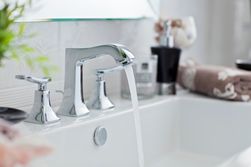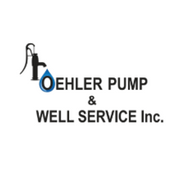What to Know About Bacteria In Well Water

With a private well on your property, you don’t have to deal with service disruptions or any of the other common headaches that come with city-sourced water. To ensure your water is safe for consumption, you must regularly lab-test it for harmful contaminants like bacteria. To keep your family safe, learn more about the microorganisms that could be hidden in your well water — and find out how to get rid of them.
What Kinds of Bacteria Are in Well Water?
Infiltration of soil water, backflow, and runoff from nearby rivers and streams can introduce bacteria into your well. Although there are various strains of the microorganism, coliform bacteria are often found in water wells. This type of bacteria is present in animal waste, human waste, plant matter, and soil. E. coli is a type of coliform that can cause illness. Check to see if the septic tank is overflowing or sewer lines are ruptured, as human excrement can get into water this way. People with E. coli infections often experience abdominal cramping, vomiting, and diarrhea.
How to Remove Contaminants
 To restore the quality of well water, you can have a well service specialist disinfect the system using chlorine or other chemicals. You can also invest in a water filter to trap bacteria before water comes out faucets. Technicians can also use percolation for water treatment, as it alters how water moves through the soil. Ultraviolet irradiation also kills bacteria by altering its DNA.
To restore the quality of well water, you can have a well service specialist disinfect the system using chlorine or other chemicals. You can also invest in a water filter to trap bacteria before water comes out faucets. Technicians can also use percolation for water treatment, as it alters how water moves through the soil. Ultraviolet irradiation also kills bacteria by altering its DNA.
Whether you need well drilling to install a new system or need treatment options and pump repairs for your current investment, the technicians at Oehler Pump & Well Service will come to your aid. Based in Charlotte, NC, the contractors have been the go-to source for a comprehensive array of well solutions since 1970. To ask questions or schedule a service appointment, call (704) 875-2209. Visit them online to learn more about their services.
About the Business
Have a question? Ask the experts!
Send your question

